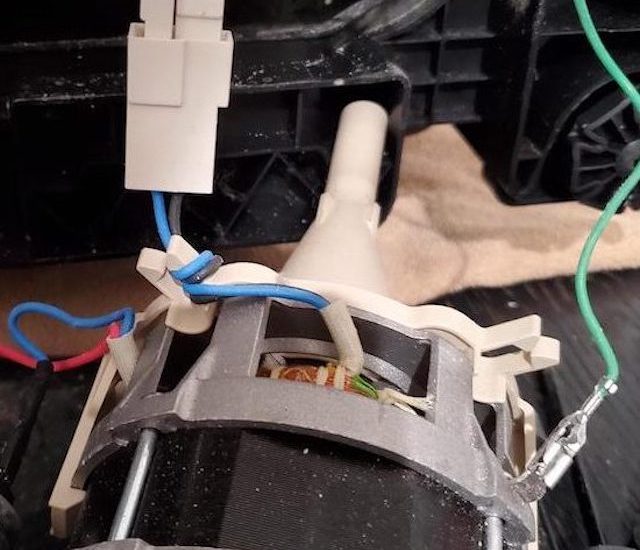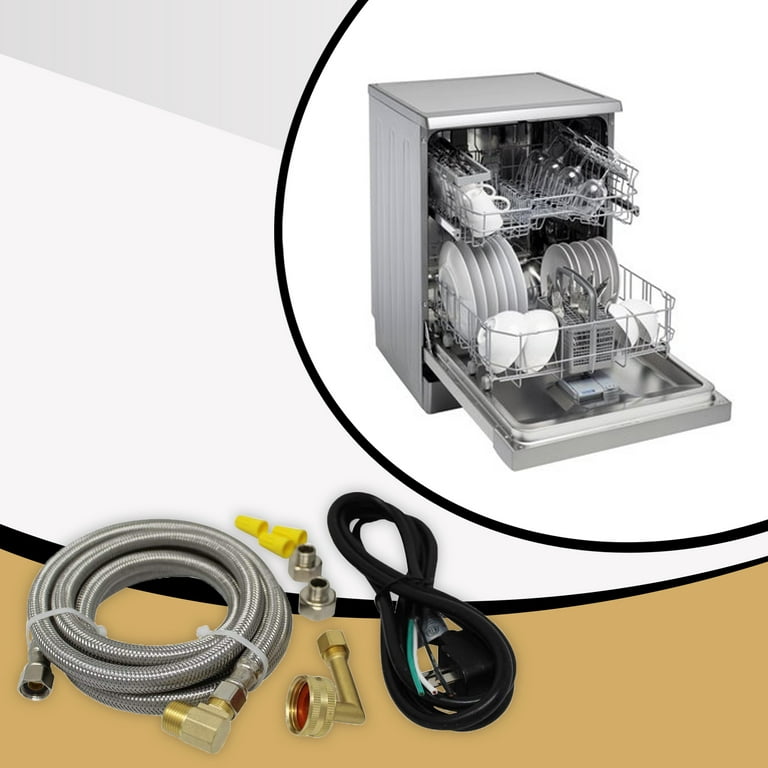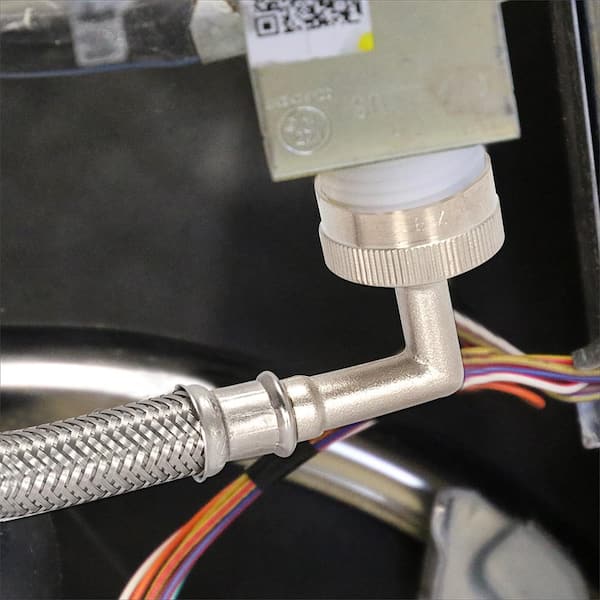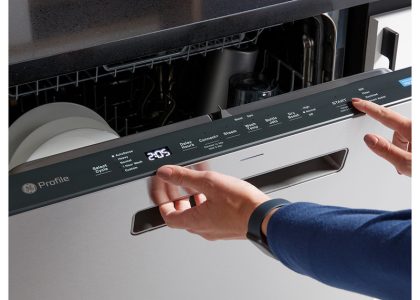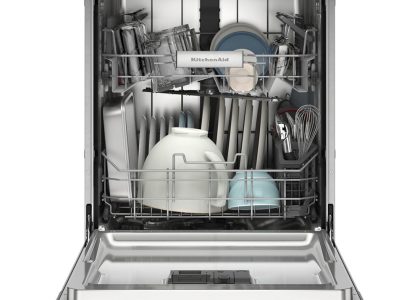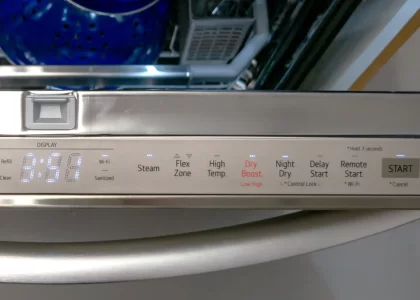Introduction to Dishwasher Wiring
Wiring a dishwasher is a task that demands attention to detail and a solid understanding of electrical systems. Before we begin, it is essential to comprehend how to wire a dishwasher safely and effectively. This guide will serve as an introductory platform, outlining the necessary steps and skills required to accomplish this task. Knowing what you’re dealing with will help prevent any potential hazards and ensure a smooth installation process.
Dishwasher wiring typically involves connecting your appliance to the power supply within your kitchen. This usually means integrating the dishwasher into your home’s electrical circuit. The wiring process can vary slightly depending on the dishwasher model and the existing kitchen wiring. However, with the right tools and safety practices, you can achieve a safe and functional installation.
Effective dishwasher wiring contributes to the appliance’s performance and longevity. Hence, our goal is to create a succinct roadmap for both novice and experienced DIYers. Throughout this blog, we will incorporate essential keywords such as ‘how to wire a dishwasher’, ensuring that our content is both informative and optimized for search engines. Let’s gear up to understand the basics, implement safety measures, and take a step-by-step approach to wire your dishwasher properly.
Safety Precautions and Tools Needed
Safety should always be your top priority when you’re learning how to wire a dishwasher. Before starting, ensure that the power supply is off. You can do this by switching off the circuit breaker connected to your dishwasher’s location. Use a voltage tester to confirm there is no current flowing through the wires.
Protective gear is vital. Wear safety glasses to shield your eyes and gloves to protect your hands from any sharp edges or electrical hazards. Additionally, have non-conductive footwear on to minimize the risk of electric shock.
Now, let’s talk about the tools you’ll need. Gather the following before you begin:
- Screwdrivers: A set of flathead and Phillips screwdrivers for opening the dishwasher panel and securing connections.
- Wire strippers: To neatly strip the insulation off the electrical wires without damaging them.
- Voltage tester: To ensure the safety of your workspace by verifying the absence of electricity.
- Wire nuts: For securely connecting wire ends together.
- Electrical tape: A must for insulating wire joints and preventing accidental contact.
- Drill: In some cases, you might need to create holes for running wires to the power source.
With the right precautions and tools, you’re set to wire your dishwasher safely and efficiently. Always double-check your tools and safety gear before proceeding to ensure you’re fully prepared for the task ahead.
Understanding Dishwasher Electrical Requirements
Before diving into the ‘how to wire a dishwasher’ process, you must understand its electrical requirements. This knowledge is crucial because it ensures the dishwasher will operate safely without overloading your home’s electrical system. Here are the basic requirements you should be aware of:
- Voltage and Amperage: Most dishwashers operate on a 120-volt, 60 Hz AC circuit. They typically require 15-20 amperes. Check your dishwasher’s manual for precise specifications.
- Dedicated Circuit: It’s advisable to have a dedicated circuit for your dishwasher to prevent circuit overloads. This means the dishwasher should have its own circuit breaker in your electrical panel.
- Grounding: Proper grounding is essential for safety. Ensure that your dishwasher is connected to a grounding wire that complies with local electrical codes.
- Wire Size: The size of the wire you use must match the required amperage for your dishwasher. For most household dishwashers, a 14-2 or 12-2 gauge wire is sufficient.
- Power Cord: Some models come with a power cord that needs to be plugged into a grounded outlet. Others must be hardwired directly into the circuit.
Grasping these electrical basics will guide you through a successful dishwasher installation and avoid common pitfalls. With this foundation, you are now ready to prepare for the actual installation process.
Preparing for Installation
Before starting the wiring process, preparation is key. Here is what you need to prepare for the installation of your dishwasher:
- Appliance Manual: Review the manual for any specific requirements. It may list steps tailored to your model.
- Inspection of the Area: Ensure the space where you will install the dishwasher is clean and accessible. Keep tools handy.
- Electrical Circuit Check: Verify that the electrical circuit is off. Use a voltage tester for confirmation.
- Wire Routing Plan: Decide how you will route the wires from your dishwasher to the power source.
- Ground Fault Circuit Interrupter (GFCI): If needed, install a GFCI outlet to enhance safety.
- Gather Materials: Confirm you have all the right tools and materials listed in the previous sections.
These steps will set the stage for a smooth installation process. By having everything in place, you reduce the risk of issues arising during the wiring phase. Stay organized and take your time preparing to wire your dishwasher correctly.
Step-by-Step Wiring Process
Now that you have completed the preparation, let’s move on to the step-by-step wiring process for your dishwasher. Follow these instructions to ensure a safe and correct installation.
- Turn Off the Power: Begin by ensuring the power to the circuit is off. Double-check with a voltage tester. Safety first!
- Access the Junction Box: Remove the dishwasher’s kick plate. Locate and open the junction box, typically found at the front.
- Prepare the Wires: Use wire strippers to prepare the wires. Strip about three-quarters of an inch of insulation from the ends.
- Connect the Wires: Attach the ground wire to the dishwasher’s green grounding screw. Connect white to white and black to black wires using wire nuts. Securely twist the wire nuts and pull lightly to check the connection.
- Insulate the Connections: Wrap each wire nut and connection with electrical tape. This adds an extra layer of safety.
- Secure the Wiring: Tuck the connected wires neatly into the junction box. Close the cover of the junction box and secure it with screws.
- Reattach the Kick Plate: Once the junction box is closed, replace the kick plate on the front of the dishwasher.
- Restore Power: Turn the circuit breaker back on. Check to see if the dishwasher powers up.
These steps show you how to wire a dishwasher with attention to safety and precision. If you are unsure at any point, consult a professional. Wiring your dishwasher correctly is crucial for it to function safely and efficiently.
Troubleshooting Common Wiring Issues
Even with careful installation, you might encounter some common wiring issues when learning how to wire a dishwasher. These issues can affect performance or pose safety risks, so it is imperative to troubleshoot them promptly. Here are steps to diagnose and fix some typical problems:
- Dishwasher Won’t Power On: Check to make sure the circuit breaker hasn’t tripped. Confirm the power supply is on.
- Tripping Circuit Breaker: If the breaker trips when the dishwasher is running, the circuit may be overloaded. This could mean the dishwasher requires its dedicated circuit.
- Flickering Lights or Other Electrical Interference: Ensure the dishwasher is properly grounded. Check for loose wire connections.
- Dishwasher Starts but Then Stops: Inspect the connections in the junction box for a secure fit. Test each connection with a voltage tester.
- Strange Noises or Smells: This can signal a faulty connection. Switch off the power immediately and review all wiring connections.
For these and any other electrical issues, refer back to your dishwasher’s manual for specific troubleshooting guidance. If the problem persists, it may be safer to seek assistance from a qualified electrician. Regular checks can prevent issues from becoming serious. It’s better to address small problems before they escalate.
Final Checks and Testing
Once you have completed the wiring of your dishwasher, the final step involves checks and testing to ensure everything is correctly in place and functioning. Follow these vital steps carefully to confirm the safety and operation of your installation:
- Visual Inspection: Before turning on the power, do a thorough visual check. Ensure all wires are securely connected and correctly matched by color.
- Junction Box: Confirm that the junction box cover is properly attached and that no wires are pinched or exposed.
- Circuit Breaker: Go to your electrical panel and double-check that the dishwasher’s circuit breaker is off before the final test.
- Power Up: Turn on the circuit breaker and observe the dishwasher. It should power on without tripping the breaker.
- Test Run: Run a short cycle in the dishwasher to make sure it operates smoothly. Listen for any unusual sounds.
- Check for Leaks: While the dishwasher is running, inspect for any water leaks or signs of moisture that may indicate a problem.
- Shut-off Test: Turn off the dishwasher using its control panel. It should stop completely without any issues.
By carefully performing these checks, you can be confident that you know how to wire a dishwasher effectively and safely. If all systems are go, congratulations on successfully wiring your dishwasher! Should you encounter any operational issues during these final tests, refer to the troubleshooting section for guidance or consult a professional as needed.
Maintaining Your Dishwasher’s Electrical System
After wiring your dishwasher and ensuring it operates correctly, maintaining its electrical system is vital. Regular maintenance contributes to the appliance’s performance and longevity. Here’s what you need to know about keeping your dishwasher’s electrical system in top condition:
- Regular Checks: Periodically examine the dishwasher’s plug and cord for any signs of wear or damage. If you notice any frayed wires or loose connections, address them immediately.
- Clean the Junction Box: Ensure the junction box area remains clean and dust-free. Accumulated dust can pose a fire hazard.
- Power Surge Protection: Consider using a surge protector to shield your dishwasher from unexpected power spikes that could damage the electrical components.
- Avoid Overloading Circuits: Make sure not to overload the circuit by plugging in too many appliances. Keep the dishwasher on its dedicated circuit.
- Professional Inspection: Have the electrical connections and wiring inspected by a professional electrician periodically, especially if you notice any electrical issues.
- Follow the Manual: Always refer to your dishwasher’s manual for specific maintenance recommendations related to the model.
- Circuit Breaker Health: Check the circuit breaker connected to the dishwasher for any signs of wear or failure. Replace it if necessary.
By following these maintenance steps, you reduce the risk of electrical problems and ensure your dishwasher runs efficiently for years. Remember to incorporate ‘how to wire a dishwasher’ into your regular inspection routine, as this can help detect issues early.

